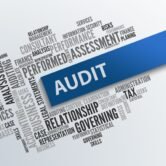What Defines a High-Performance Culture?

Creating a high-performance work culture is often the key to organizational success. This dynamic environment is characterized by innovation, collaboration, and a relentless drive to achieve excellence.
However, such cultures do not materialize by chance. They result from deliberate and strategic efforts by everyone in the organization. Leadership must set the tone, demonstrating transparency, trust, and a strong work ethic. At the same time, employees must be empowered to take initiative, supported in their endeavors, and recognized for their contributions.
When all these elements come together, a high-performance culture thrives, allowing individuals to reach their fullest potential and driving the organization toward extraordinary achievements.
What is a High-Performance Culture?
A high-performance culture is designed to maximize employee effectiveness and align individual goals with the organization’s broader objectives.
According to Gartner, it involves creating a physical or virtual setting that enables employees to perform at their best. This type of culture is characterized by shared values, clear goals, and practices that encourage accountability, trust, and innovation.
At its core, a high-performance culture is about more than just achieving business goals. It’s about fostering a sense of purpose among employees, ensuring they feel valued and motivated to contribute to the organization’s success.
When employees are engaged and aligned with the company’s mission, they are more likely to go above and beyond in their roles, driving overall performance and growth.
What Defines a High-Performance Culture?
Several key characteristics define a high-performance culture:
- Shared Mission and Goals: IHaving a clear and compelling vision that resonates with all employees is crucial. Everyone should understand how their work contributes to the organization’s overall success. This alignment creates a sense of purpose and direction.
- Employee Empowerment: Employees need the autonomy to make decisions and take ownership of their work. Empowerment fosters accountability and confidence, encouraging individuals to innovate and solve problems effectively.
- Continuous Learning and Development: A commitment to ongoing professional development helps maintain a growth mindset. Providing opportunities for skill enhancement keeps employees engaged and prepares them for future challenges.
- Open Communication and Collaboration: Effective communication is the backbone of any high-performance culture. Encouraging open dialogue and collaboration across all organizational levels helps identify and solve problems swiftly.
- Agility and Security: In a high-performance culture, agility is essential. Organizations must be adaptable to change, encouraging calculated risk-taking and learning from failures. Simultaneously, employees should feel secure in their roles, knowing that the organization supports their well-being.
- Effective Performance Management: Regular performance reviews, ongoing feedback, and mentoring are vital. These practices help employees understand their strengths and areas for improvement, fostering a culture of continuous improvement.
By integrating these elements into your workplace, you can create an environment where employees are motivated, engaged, and aligned with your business goals.
Examples of High-Performance Cultures
Several organizations exemplify what it means to cultivate a high-performance culture. These examples demonstrate that a high-performance culture is achievable through strategic initiatives that prioritize employee development, engagement, and alignment with organizational goals.
Here are a few real-world examples:
Adobe
Adobe has revolutionized its performance management system by replacing annual performance reviews with regular “check-ins.” This shift was driven by feedback that traditional reviews were stressful, time-consuming, and often unproductive. The Check-In Model focuses on continuous feedback, goal-setting, and career development.
Managers and employees have frequent conversations about expectations and progress, which fosters a culture of continuous improvement and engagement. This approach has saved Adobe over 100,000 manager hours annually and significantly enhanced employee satisfaction and productivity.
Zoom
Zoom’s emphasis on cultural care during its rapid growth and the challenges posed by the COVID-19 pandemic highlights its commitment to maintaining a high-performance culture.
The company has prioritized employee well-being, effective communication, and a supportive work environment. These efforts have helped sustain high levels of productivity and morale despite the rapid changes and increased demands on the workforce.
Deloitte
Deloitte’s leadership development programs underscore the importance of investing in people. The firm offers extensive mentorship and external coaching, which supports continuous learning and development. This focus on professional growth has enabled Deloitte to maintain its competitive edge and drive high performance across the organization.
By fostering a culture that values continuous improvement and leadership development, Deloitte ensures its employees are well-equipped to meet the evolving demands of the business world.
How Do You Measure a High-Performance Culture?
Measuring a high-performance culture involves using a combination of qualitative and quantitative methods to gain a comprehensive understanding of the organizational environment.
Here are some fundamental approaches:
Surveys and Feedback
Regular employee surveys and feedback sessions are essential tools for gauging engagement levels and job satisfaction and identifying areas for improvement. These surveys can cover various aspects of the work environment, such as communication effectiveness, leadership quality, and overall job satisfaction.
The feedback gathered provides valuable insights into the health of the organizational culture and highlights areas that may require attention or change.
Performance Data
Tracking performance metrics such as productivity, employee turnover, and absenteeism provides quantitative evidence of a high-performance culture. These metrics help organizations understand how well they are performing and identify trends over time.
For example, a consistent decrease in turnover indicates improved employee satisfaction and engagement. At the same time, high productivity levels signal an effective and motivated workforce.
Analytics
Leveraging data analytics allows organizations to integrate performance data into daily workflows for real-time monitoring and decision-making. This approach ensures that the organization remains agile and responsive to changes, enabling proactive management of issues before they escalate. Data analytics can reveal patterns and correlations that might not be immediately apparent, providing deeper insights into organizational performance.
Skill Gap Analysis
Regular assessments of employee skills and competencies help identify gaps and inform targeted development initiatives. By addressing these gaps, organizations can ensure their workforce is equipped to meet current and future challenges.
Skill gap analysis not only supports individual employee growth but also aligns the workforce’s capabilities with the organization’s strategic objectives, fostering a culture of continuous improvement and high performance.
Build a High-Performance Culture With HPWP Group
Creating a high-performance culture is a journey that requires dedication, strategic planning, and continuous improvement. At HPWP Group, we specialize in helping organizations like yours achieve this goal. With over 35 years of experience, we have developed and refined comprehensive leadership development and organizational effectiveness services that deliver results.
Our approach is not one-size-fits-all. We recognize that every organization is unique and customize our solutions to fit your workplace. Whether you need to reduce employee turnover, enhance productivity, hire and retain top talent, or merge divergent cultures, we have the expertise to help.
The HPWP philosophy is based on the belief that the majority of employees are responsible and capable of achieving great things when given the right environment and support. Let us partner with you to create an environment where your employees thrive, and your organization achieves its highest potential.
Get in touch with HPWP Group today to start building towards a high-performance work culture.










